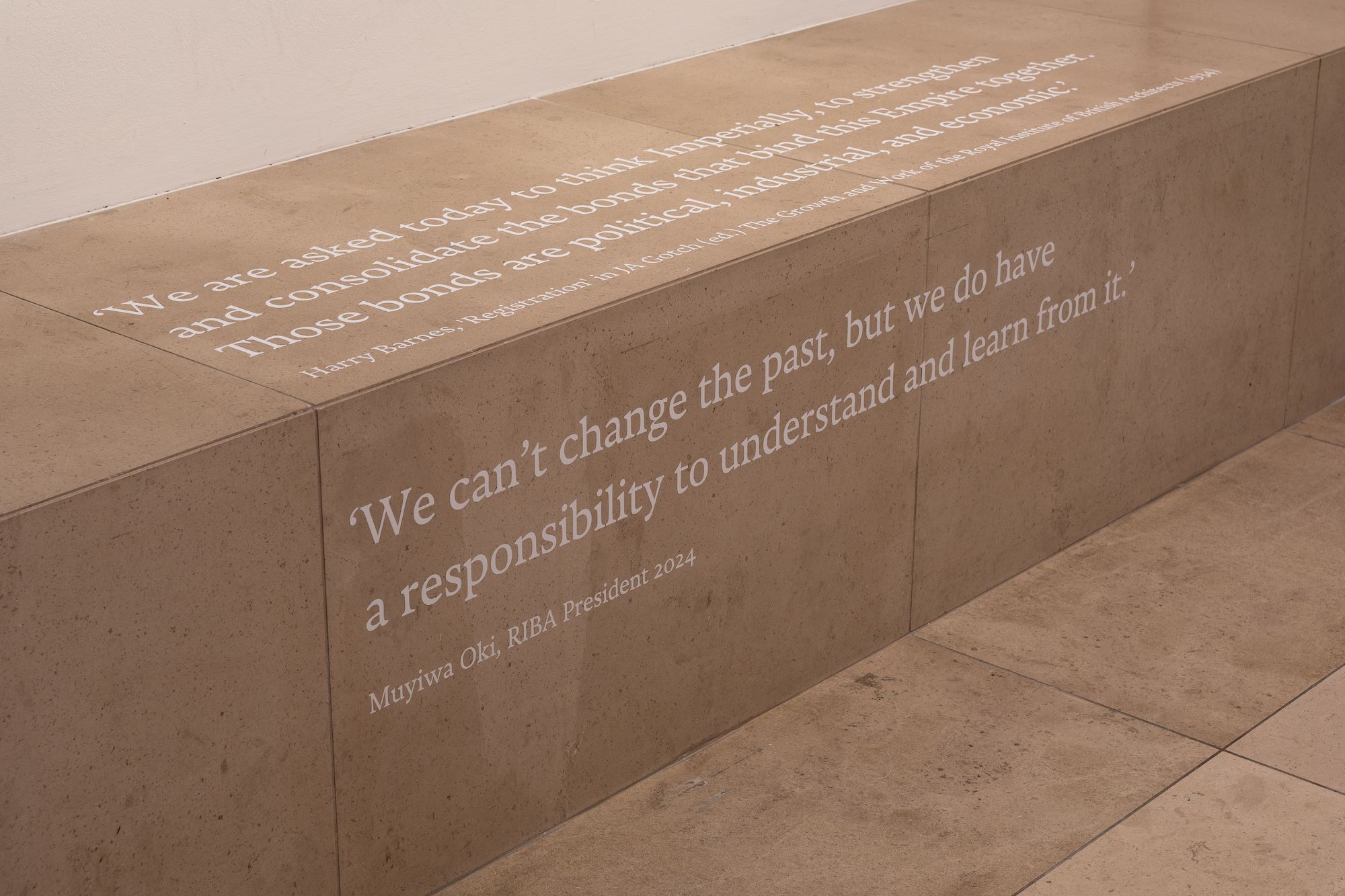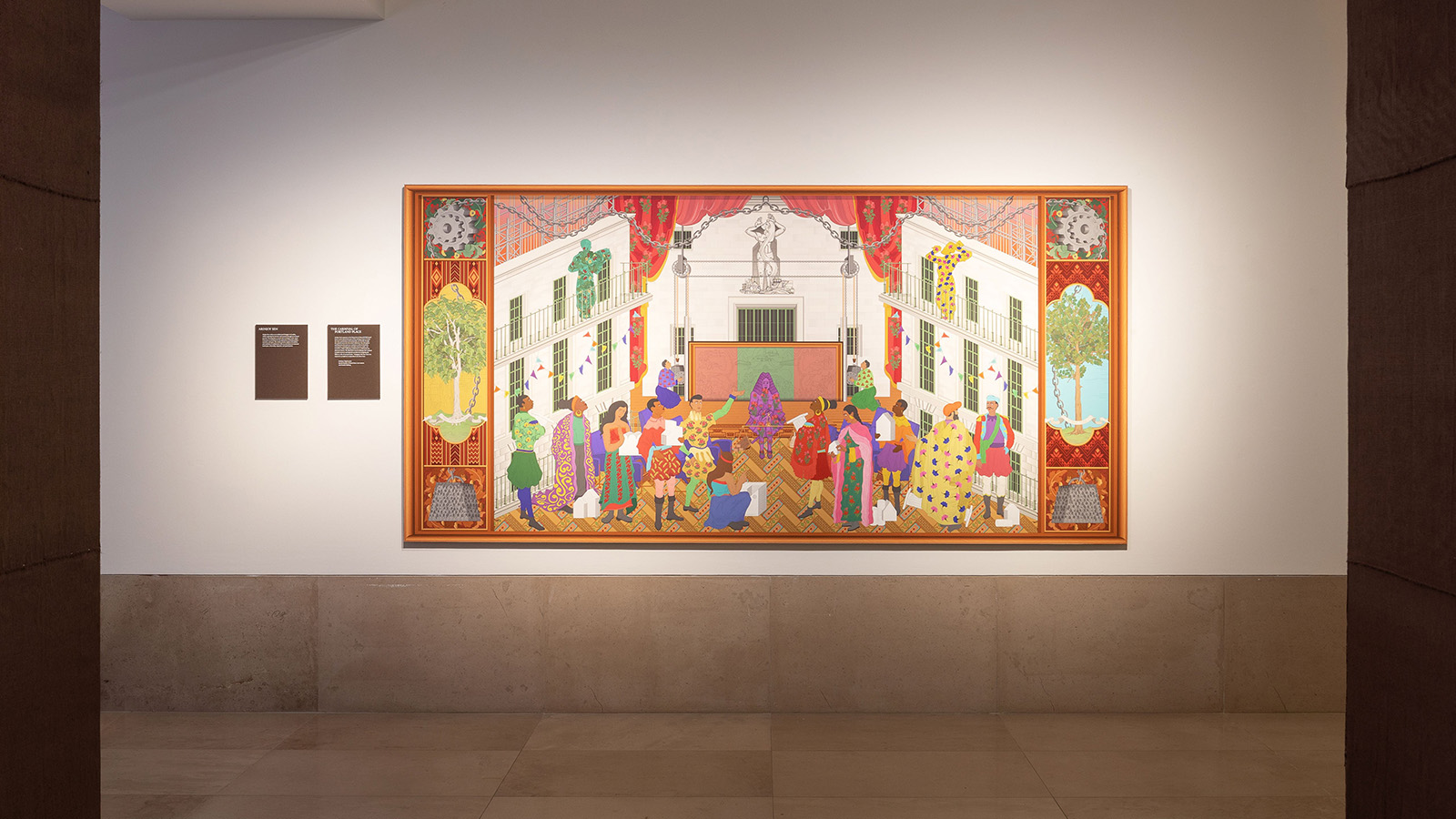
With its latest exhibition, ‘Raise the Roof: Building for Change’, the Royal Institute of British Architect (RIBA) seeks to confront uncomfortable truths. RIBA’s HQ at 66 Portland Place in London serves as a powerful nucleus for its members, architects, and design enthusiasts. However, inside the 90-year-old Grade II*-listed building, several problematic British Imperialist features exist.
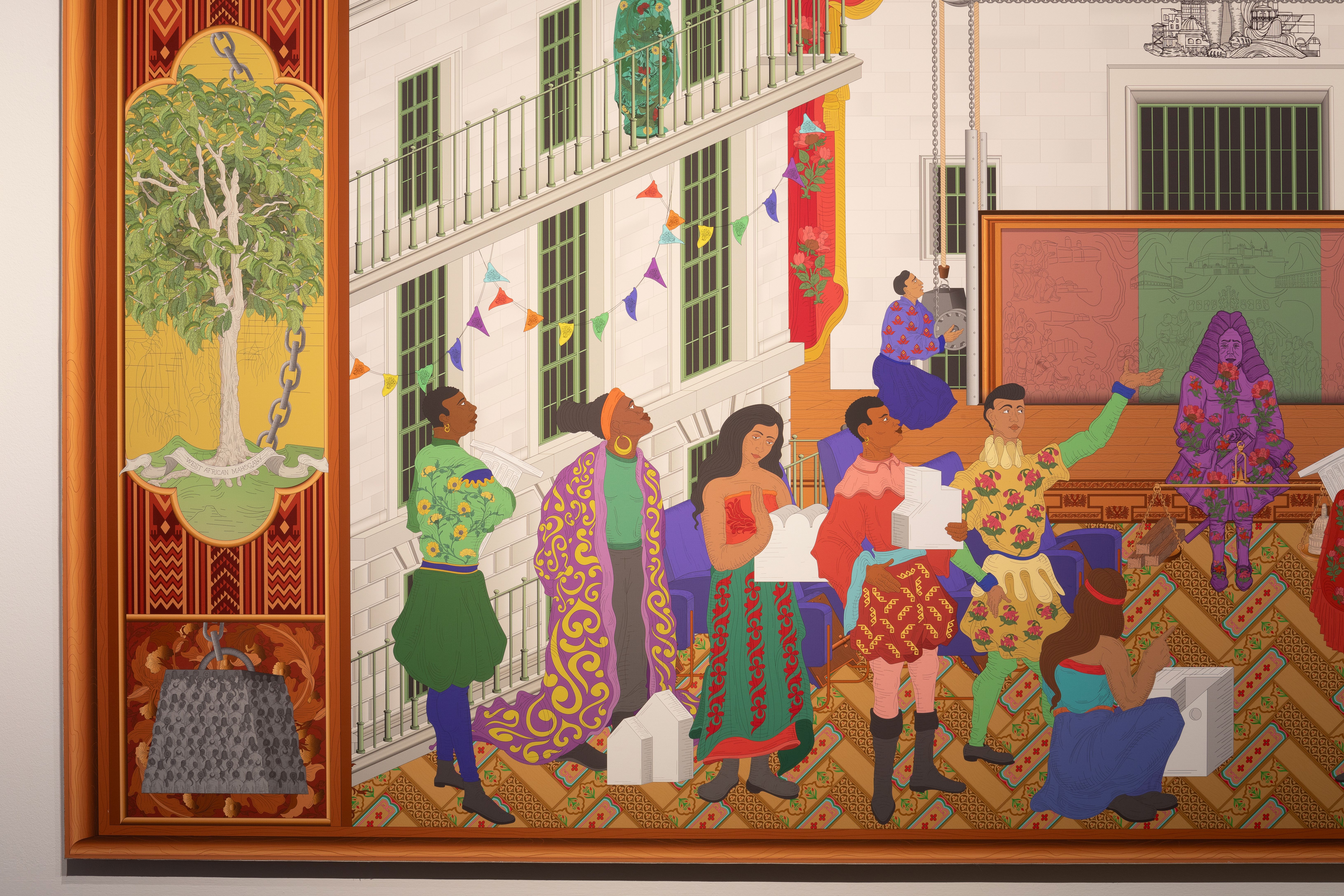
RIBA presents ‘Raise the Roof: Building for Change’
Focusing on race, identity, and colonialism the show unpacks the divisive Jarvis Mural and Dominion Screen, two works that live at RIBA’s HQ. Designed by sculptor Denis Dunlop, the Dominion Screen, housed in the Henry Florence Memorial Hall, is a 20-panel wood installation depicting the people, animals, and resources the British Empire brutally exploited.
The Jarvis Mural, painted by artist Edward Bainbridge Copnall and on show in the Henry Jarvis Memorial Hall, portrays indigenous people as primitive natives, inferior to Imperial Britain.
Addressing these troubling depictions, RIBA commissioned creatives Esi Eshun, Giles Tettey Nartey (also featured in the recent Wallpaper* Class ’24 exhibition in Milan), Thandi Loewenson, and Arinjoy Sen to produce new work that responds to the pieces for ‘Raise the Roof: Building for Change’.
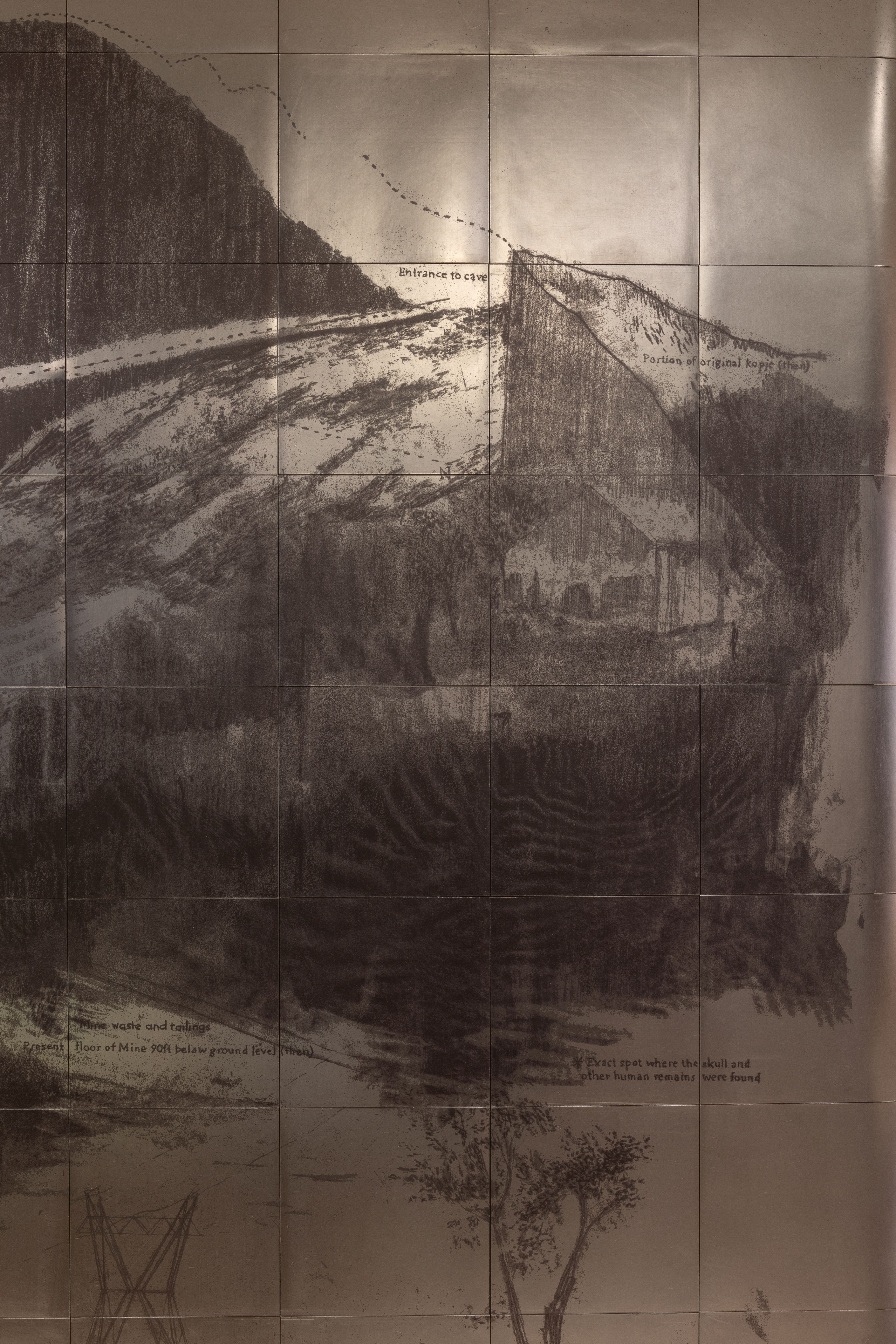
Designed by architecture practice Msoma Architects and creative studio Plan B, the exhibition starts by giving visitors the history of 66 Portland Place. As you walk around the green- and brown-toned show, you will learn about colonialism and British Imperialism before seeing the four commissioned works. ‘This exhibition addresses a history that has forged and shaped the world we live in today,’ says RIBA's exhibitions curator Margaret Cubbage.

The first commission visitors will see is architectural researcher Thandi Loewenson’s Backlight, a response to the Jarvis Mural. With the help of London-based creative Zhongshan Zou, Loewenson has created an evocative graphite mural with an accompanying essay that speaks to Imperial Britain’s violent resource extraction, labour exploitation and racism.
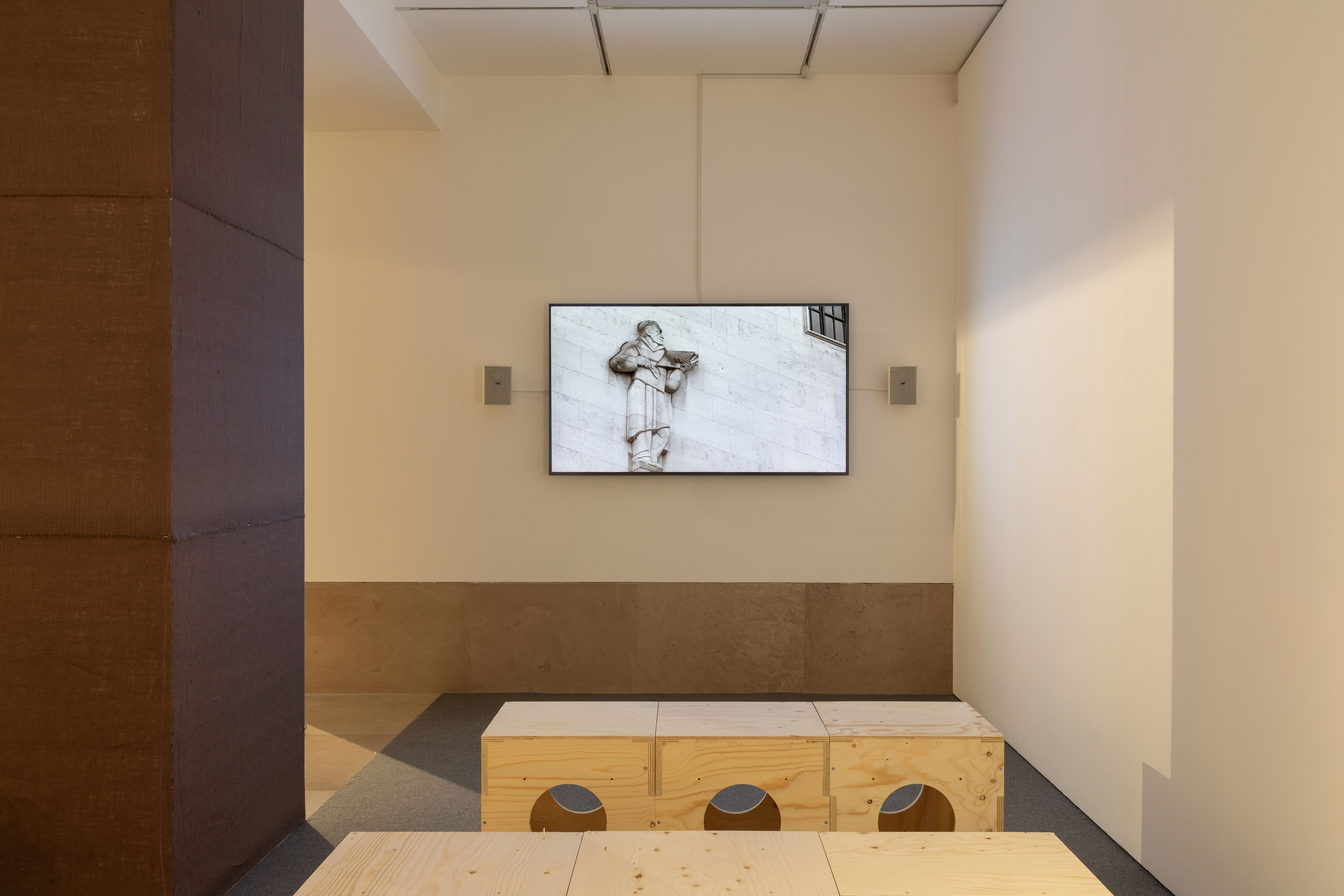
Adjacent to Loewenson’s work is architect Giles Tettey Nartey’s black wood furniture made from the same Quebec pine as the Dominion Screen. A collection of 17 stools, Assembly invites visitors to sit, discuss and respond to the different symbols that make up the imperialist screen. ‘We hope that visitors feel comfortable to contemplate and reflect on the importance and need for decolonisation,’ says Cubbage.
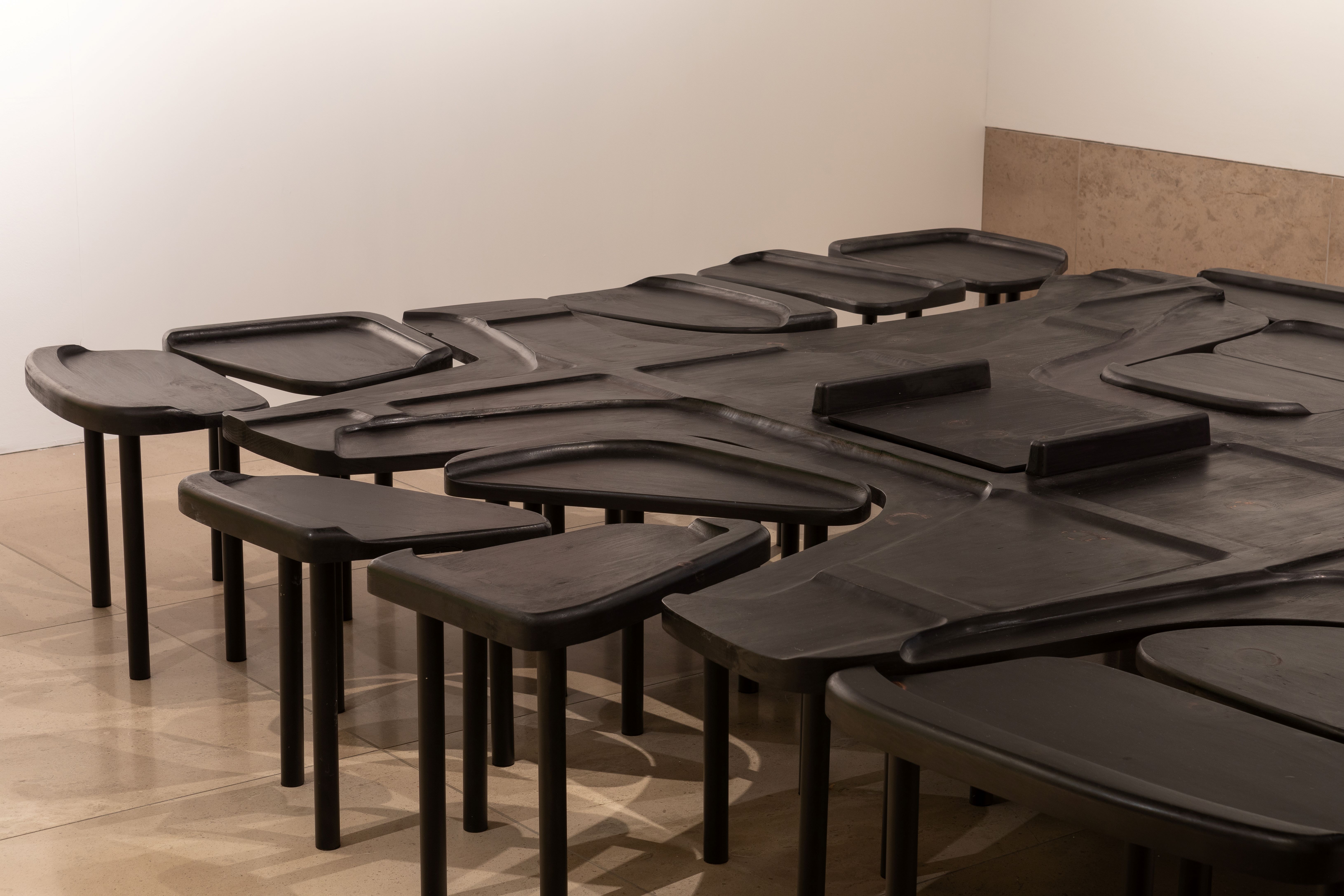
Architectural designer Arinjoy Sen, meanwhile, has created The Carnival of Portland Place, an illustrative installation that aims to challenge problematic imperial narratives. Addressing the Jarvis Mural through his piece, Sen seeks to challenge outdated systems of power and bring marginalised stories to the foreground.
‘As part of decolonising architecture, it helps to educate and raise awareness to the injustices and power dynamics that forged the world we live in today,' says Cubbage.

At the end of the show, visitors can watch Esi Eshun’s powerful 15-minute film. Titled The Vanishment, her video carefully blends audio with archival imagery to unravel the stories behind the Jarvis Mural. Her work seeks to unpack some of the structures, indigenous groups and power dynamics that make up the mural.

‘Raise the Roof: Building For Change’ is RIBA’s attempt to address the colonial narratives deeply rooted in the fabric of 66 Portland Place. Through these four creative interventions, the professional body has carefully reflected on parts of its building and created a space for progressive dialogues about British Imperialism. Cubbage concludes: ‘We see the exhibition as the first step in the process of decolonising the building and the RIBA Collection.’
